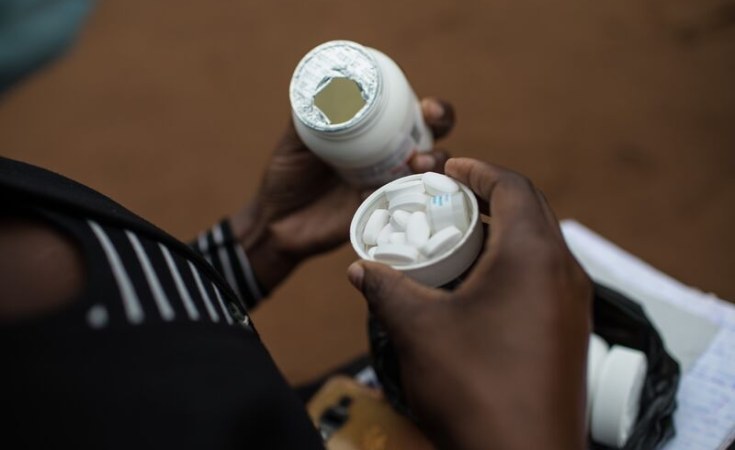The choice is clear, and the time to act is now: Trust, empower, and follow the lead of the communities we serve.
The 25th International AIDS Conference in Munich highlighted a critical strategy for ending HIV as a public health threat by 2030: putting communities at the forefront. While the global HIV response has long been a collaborative effort with significant progress, deeper community engagement is now vital to address persistent challenges.
As we approach our 2030 goal , we must refine our approach to integrate community leadership better while maintaining strong international support. This evolution builds on past successes, creating a more effective and sustainable response to overcome the HIV epidemic finally.
What is community-centered programming?
Community-centered programming isn't just about consultation; it's about genuine leadership that involves those living with or affected by HIV in every stage of the process - from design and implementation to monitoring and evaluation. It ensures communities lead the process by contributing their unique insights, needs, and strengths, which are essential for developing effective and sustainable solutions. This approach also supports initiatives conceived, led, and managed by community members, best positioned to address local challenges and cultural contexts.
But let's be clear: this isn't just feel-good rhetoric. Community-led responses work. When communities take charge, programs become more responsive, culturally appropriate, and effective. Trust between service providers and community members increases, driving better health outcomes and a stronger, more resilient HIV response.
At its core, this approach prioritizes the rights of people living with HIV. It actively fights stigma, discrimination, and marginalization, promoting dignity and respect within the communities it serves.
Barriers to community-centered HIV programming
Yet, significant barriers persist. Stigma against people living with HIV and marginalized groups, such as sex workers and LGBTQ+ individuals, continues to hinder their involvement in programming and limit the effectiveness of interventions. Many community-based organizations struggle due to operating on limited budgets, which impedes their potential to make a significant impact. In some regions, punitive laws and policies criminalize the very populations in need of support.
External threats add another layer of complexity. Conflict, displacement, climate change, and other humanitarian crises disrupt services, displace communities, and exacerbate vulnerabilities, making it even more difficult to maintain a consistent and effective HIV response.
These challenges are formidable but not insurmountable. Overcoming them requires radically rethinking our approach to be more flexible, equitable, and inclusive.
Community Leadership, Systemic Change, and Innovative Adaptability
This means fundamentally reshaping our strategies around three core principles: community leadership, systemic change, and innovative adaptability. At Pathfinder International, we have long recognized the centrality of communities in our work and have successfully embraced these three strategies. Our experience demonstrates that this approach works and is essential for effective HIV programming.
First, we must empower communities through meaningful partnerships while sustaining strong international commitment and funding. At Pathfinder, we’ve seen firsthand that building the capacity of Community-Based Organizations (CBOs) leads to stronger, more resilient communities. In Mozambique, for example, we train and support CBOs and Civil Society Organizations (CSOs) to enhance their skills in HIV prevention, care, and treatment. These organizations, which also address gender-based violence (GBV) among key populations, often go on to secure grants as sub-awardees, combining local expertise with global resources. This strategy leverages community insights and builds trust and ownership, both essential for a lasting HIV response.
Second, we must address the systemic barriers that hinder community-led efforts. This requires a multi-pronged approach: challenging stigma through education and advocacy, advocating for policy reforms marginalizing vulnerable populations, and creating equitable partnerships between communities, NGOs, governments, and donors. Through our Hands Off! project in Mozambique, Pathfinder is actively advocating for legal reforms to eliminate discriminatory laws that marginalize people living with HIV and key populations. By working closely with governments and communities, we foster environments where community-centered programming can thrive. This also includes strengthening health systems, as seen in our ECHO project , where we collaborated with Mozambique’s Ministry of Health to ensure a consistent supply of essential HIV medicines and improve healthcare worker training.
Finally, we must embrace innovative adaptability in our approach. The HIV landscape is not static; our responses shouldn't be either. In Nigeria , we’ve adopted digital tools for HIV prevention, such as mobile apps for medication adherence and online support groups to reach under-reached populations. We also adapt program designs in real-time using community feedback and data, like in our recent session on advancing HIV prevention through female-controlled methods. We also involve actively engaging youth in strategy development, recognizing their crucial role in shaping effective, forward-looking programs.
The path forward
Underlying all these efforts must be a fundamental trust in communities to lead. Realizing this vision calls for bold leadership from governments and international bodies willing to challenge the status quo and prioritize the needs of people living with and affected by HIV.
As we left Munich, the message was clear: communities are not just part of the solution—they are the solution. Ending HIV by 2030 is possible, but only if we put communities truly at the center of our response. The choice is clear. The time to act is now. Our success in ending the HIV epidemic hinges on our willingness to trust, empower, and follow the lead of the communities we serve.


